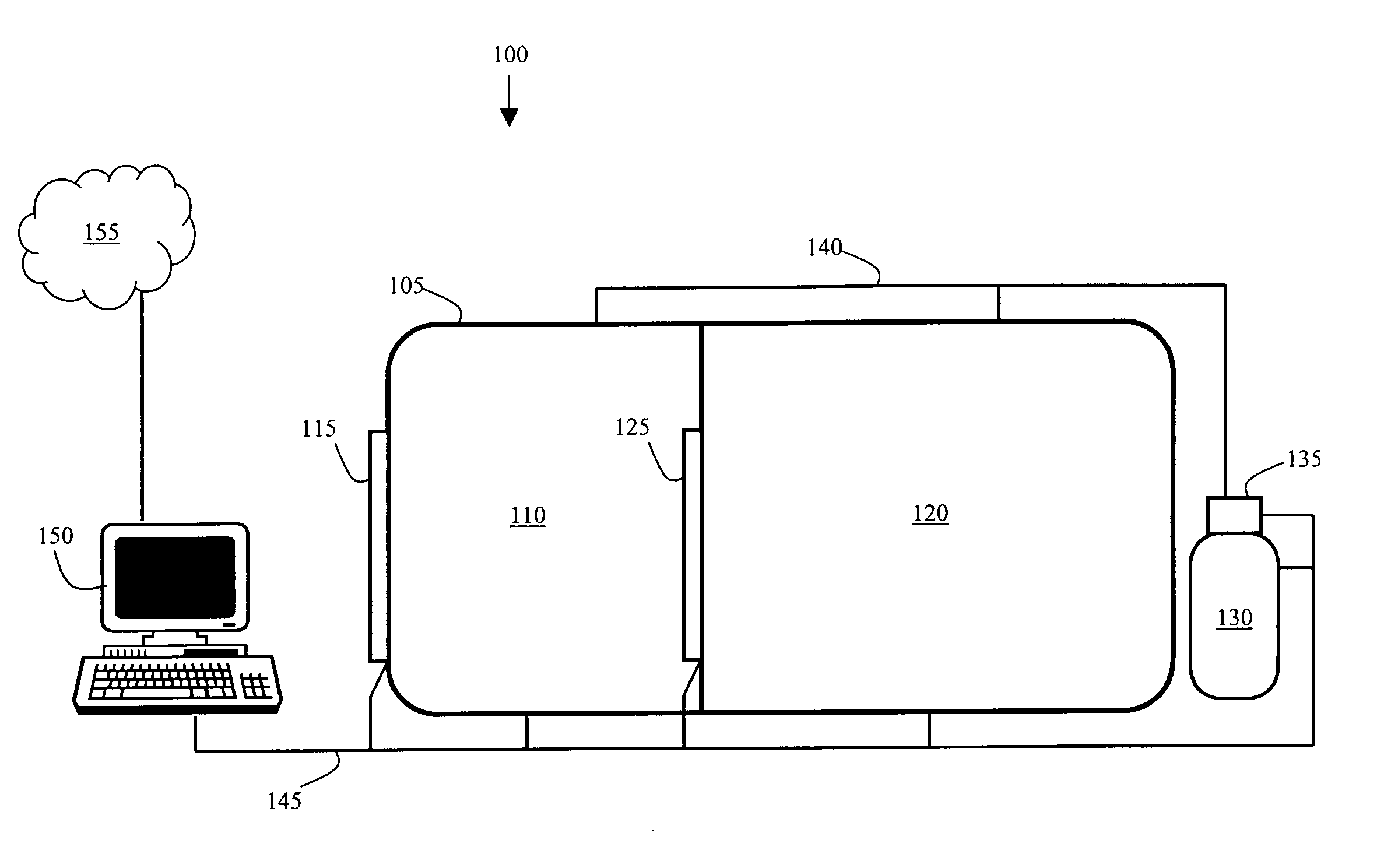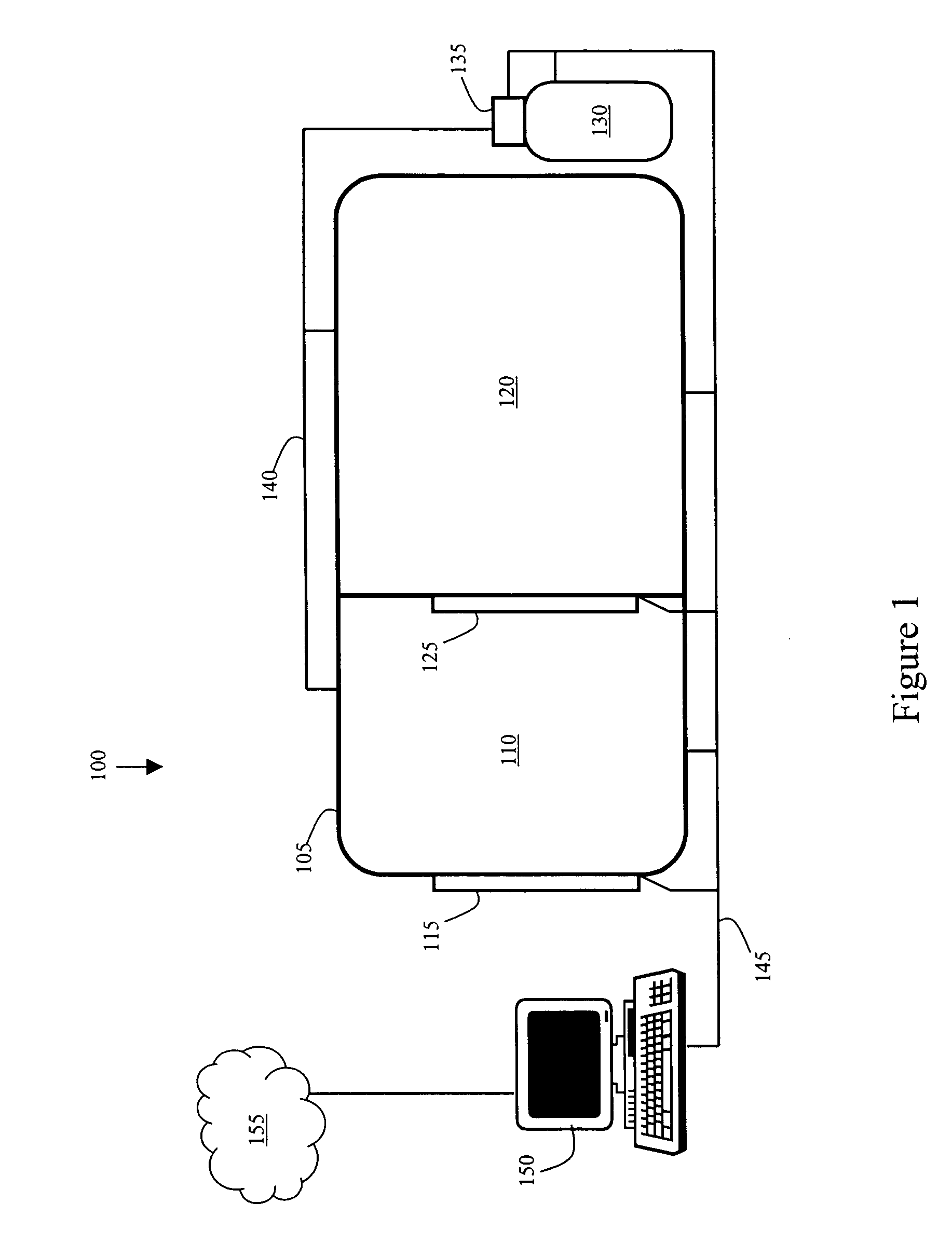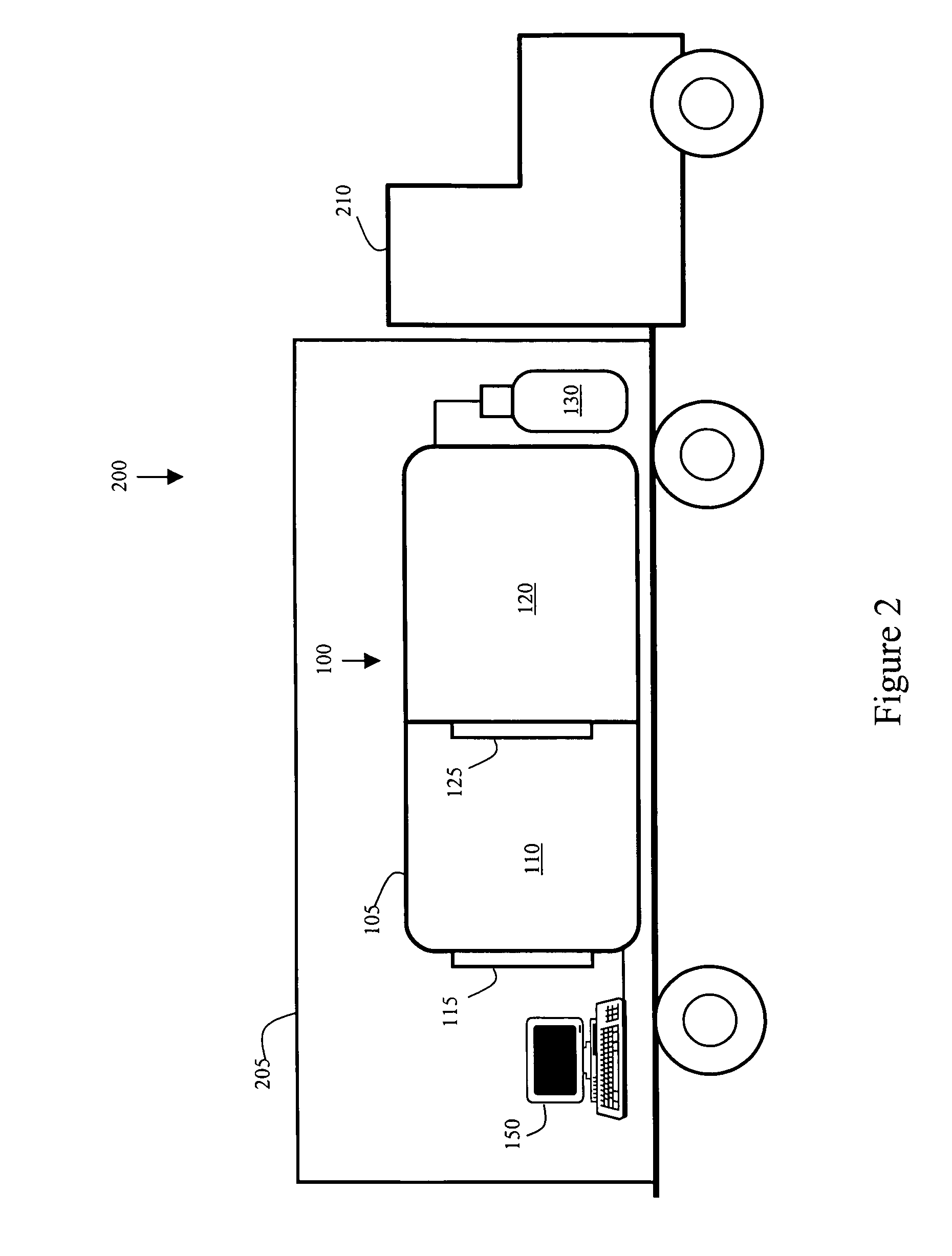Treatment for hepatitis
a technology for hepatitis and viruses, applied in the field of viruses, can solve the problems of no cure for hepatitis, disease in infected organisms, and virus is not considered free-living, and achieve the effect of enhancing the administration of therapeutic agents or other efficacious treatments
- Summary
- Abstract
- Description
- Claims
- Application Information
AI Technical Summary
Benefits of technology
Problems solved by technology
Method used
Image
Examples
Embodiment Construction
[0023]FIG. 1 shows an exemplary apparatus 100 for administering the present viral treatment. Enclosure 105 is used to create a super-atmospheric environment, which is the preferred delivery means for the present treatment. The enclosure 105 includes a first air-lock 110 and a second air-lock 120. Each air-lock 110 and 120 is a room that is capable of being sealed and pressurized to at least 10 atmospheres, which is equal to a depth of approximately 300 feet. The second air-lock 120 is the primary treatment room and preferably includes beds, benches or chairs for the patients to use during the treatment. The first air-lock 110 is a safety room that allows an assistant to enter to the second air-lock 120, if needed. The patients enter the enclosure 105 through seal-able door 115 and then enter the second air-lock 120, or treatment room, through a second seal-able door 125. Once the patients are inside the second air-lock 120 the seal-able door 125 is closed and sealed. Control unit 15...
PUM
 Login to View More
Login to View More Abstract
Description
Claims
Application Information
 Login to View More
Login to View More - R&D
- Intellectual Property
- Life Sciences
- Materials
- Tech Scout
- Unparalleled Data Quality
- Higher Quality Content
- 60% Fewer Hallucinations
Browse by: Latest US Patents, China's latest patents, Technical Efficacy Thesaurus, Application Domain, Technology Topic, Popular Technical Reports.
© 2025 PatSnap. All rights reserved.Legal|Privacy policy|Modern Slavery Act Transparency Statement|Sitemap|About US| Contact US: help@patsnap.com



